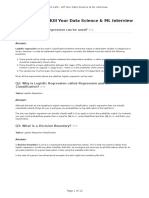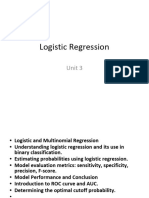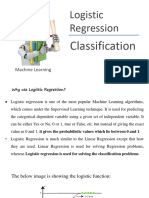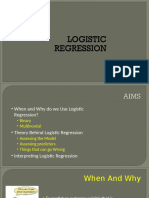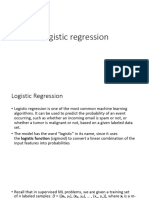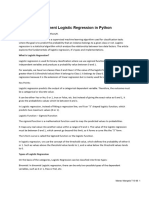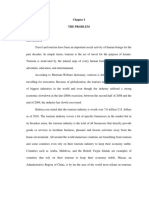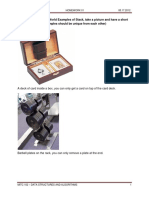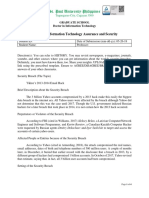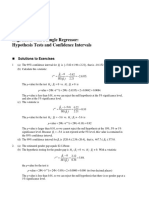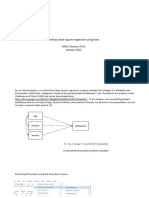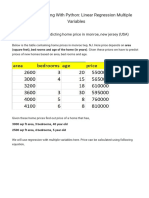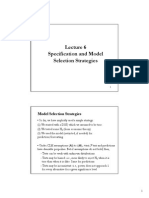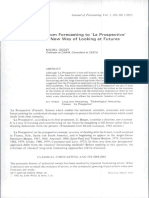0% found this document useful (0 votes)
95 views23 pages03 Logistic Regression
Logistic regression is a statistical method used to predict binary outcomes. It uses a logistic function to model the probabilities of the different outcomes. Unlike linear regression, which produces continuous outputs, logistic regression produces constant outputs between 0 and 1. Models are estimated using maximum likelihood estimation rather than ordinary least squares. Key types include binary, multinomial, and ordinal logistic regression. Performance is evaluated using metrics like accuracy, precision, recall, and ROC curves.
Uploaded by
Harold CostalesCopyright
© © All Rights Reserved
We take content rights seriously. If you suspect this is your content, claim it here.
Available Formats
Download as PDF, TXT or read online on Scribd
0% found this document useful (0 votes)
95 views23 pages03 Logistic Regression
Logistic regression is a statistical method used to predict binary outcomes. It uses a logistic function to model the probabilities of the different outcomes. Unlike linear regression, which produces continuous outputs, logistic regression produces constant outputs between 0 and 1. Models are estimated using maximum likelihood estimation rather than ordinary least squares. Key types include binary, multinomial, and ordinal logistic regression. Performance is evaluated using metrics like accuracy, precision, recall, and ROC curves.
Uploaded by
Harold CostalesCopyright
© © All Rights Reserved
We take content rights seriously. If you suspect this is your content, claim it here.
Available Formats
Download as PDF, TXT or read online on Scribd
/ 23





